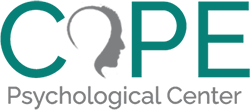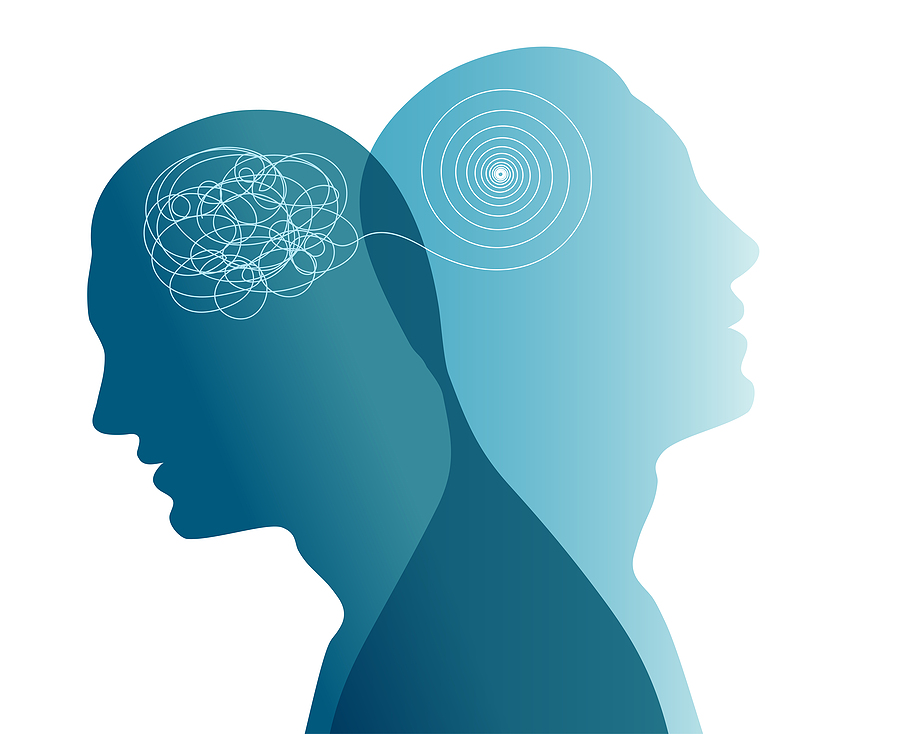3 Cognitive Behavioral Therapy Techniques in Action
Cognitive Behavioral Therapy techniques have revolutionized the field of mental health, offering powerful tools for individuals seeking to improve their emotional well-being and overall quality of life. Explore what CBT is, who can benefit from it, the key techniques used in CBT, how these techniques impact daily life, and learn about a specific therapeutic approach known as Trauma-Focused CBT. If you or someone you know is struggling with mental health issues, understanding and utilizing Cognitive Behavioral Therapy techniques can be a transformative step towards healing and personal growth.
What is CBT?
Cognitive Behavioral Therapy (CBT) is a structured, time-limited, and evidence-based form of psychotherapy that focuses on identifying and challenging negative thought patterns and behaviors. The core principle of CBT is that our thoughts, feelings, and behaviors are interconnected. By altering negative thought patterns, we can change our emotional responses and behaviors, leading to improved mental health.
Who Can Benefit from CBT?
CBT is a versatile and effective therapy that can benefit a wide range of individuals, including:
- People with Anxiety Disorders: Those suffering from generalized anxiety disorder, panic disorder, social anxiety disorder, and specific phobias.
- Individuals with Depression: CBT is highly effective in treating various forms of depression.
- Persons with PTSD: As detailed later, Trauma-Focused CBT is specifically tailored for those dealing with post-traumatic stress disorder.
- Those with Eating Disorders: CBT can help individuals with anorexia, bulimia, and binge-eating disorder.
- Individuals Facing Stress and Adjustment Issues: CBT techniques are beneficial for managing stress and adapting to life changes.
- People with Substance Abuse Issues: CBT can aid in understanding and altering the behaviors associated with addiction.
Key Cognitive Behavioral Therapy Techniques
CBT encompasses a variety of techniques aimed at modifying negative thoughts and behaviors. Here are some of the most commonly used Cognitive Behavioral Therapy techniques:
- Cognitive Restructuring or Reframing: This technique involves identifying and challenging irrational or distorted thoughts. For example, if someone believes they are a failure because of one mistake, cognitive restructuring helps them recognize this thought as an exaggeration and replace it with a more balanced perspective.
- Behavioral Activation: This technique encourages individuals to engage in activities that they find enjoyable or meaningful, especially when they feel down or unmotivated. Increasing engagement in positive activities can help improve mood and overall well-being.
- Exposure Therapy: Used primarily for anxiety disorders, exposure therapy involves gradual and controlled exposure to feared situations or objects. This helps individuals reduce their fear responses over time.
- Mindfulness and Relaxation Techniques: These techniques include practices such as deep breathing, progressive muscle relaxation, and mindfulness meditation. They help individuals manage stress and anxiety by promoting relaxation and present-moment awareness.
- Problem-Solving Skills: CBT teaches structured problem-solving techniques to help individuals cope with challenging situations more effectively. This involves identifying problems, brainstorming possible solutions, evaluating the pros and cons of each solution, and implementing the chosen solution.
- Activity Scheduling and Planning: This involves planning and organizing daily activities to ensure a balance of work, self-care, and leisure. This can help individuals manage their time better and reduce stress.
How Cognitive Behavioral Therapy Techniques Impact Daily Life
The implementation of Cognitive Behavioral Therapy techniques can have a profound impact on daily life. By learning to identify and challenge negative thoughts, individuals can reduce symptoms of anxiety and depression. Techniques such as behavioral activation and exposure therapy encourage individuals to face and overcome their fears, leading to increased confidence and resilience.
Mindfulness and relaxation techniques promote a sense of calm and well-being, helping individuals manage stress more effectively. Problem-solving skills empower individuals to handle life’s challenges proactively, while activity scheduling and planning ensure a balanced and fulfilling lifestyle.
Overall, Cognitive Behavioral Therapy techniques equip individuals with practical tools to improve their mental health and enhance their quality of life.
3 Cognitive Behavioral Therapy Techniques in Action
Scenario 1: Addressing Negative Thought Patterns with Cognitive Restructuring
Patient: Sarah, a 30-year-old woman experiencing depression, frequently has thoughts like “I am a failure” and “Nothing ever goes right for me.”
Therapist: Dr. Emily, a CBT practitioner, uses cognitive restructuring to help Sarah challenge these negative thoughts.
Session:
- Identifying Negative Thoughts:
- Therapist: “Sarah, can you tell me about a recent situation where you felt like a failure?”
- Patient: “Last week, I made a mistake at work during a presentation. I felt so embarrassed and kept thinking, ‘I’m a failure.'”
- Challenging the Thought:
- Therapist: “Let’s examine that thought. What evidence do you have that supports the idea that you’re a failure?”
- Patient: “Well, I made a mistake, and it felt like everyone was judging me.”
- Considering Alternative Perspectives:
- Therapist: “Making a mistake doesn’t necessarily mean you’re a failure. Can you think of any other explanation for what happened?”
- Patient: “I guess everyone makes mistakes sometimes. It was just one incident.”
- Reframing the Thought:
- Therapist: “Exactly. Let’s reframe that thought. Instead of ‘I’m a failure,’ how about ‘I made a mistake, but I can learn from it and improve’?”
- Patient: “That sounds more fair. I’ll try to remind myself of that next time.”
Outcome: Sarah starts to practice cognitive restructuring, gradually changing her negative self-perceptions into more balanced and realistic thoughts.
Scenario 2: Overcoming Social Anxiety with Exposure Therapy
Patient: John, a 25-year-old man with social anxiety, avoids social situations because he fears being judged or embarrassed.
Therapist: Dr. Michael, a CBT therapist, uses exposure therapy to help John confront and reduce his anxiety in social situations.
Session:
- Setting Goals:
- Therapist: “John, let’s identify specific social situations that make you anxious and create a hierarchy from least to most anxiety-provoking.”
- Patient: “Talking to a stranger at a coffee shop makes me anxious, but giving a speech in front of a group terrifies me.”
- Gradual Exposure:
- Therapist: “We’ll start with a situation that’s mildly anxiety-provoking, like ordering a coffee and making small talk with the barista. How does that sound?”
- Patient: “I think I can handle that with some practice.”
- Practicing the Exposure:
- Therapist: “This week, I want you to go to a coffee shop and initiate a brief conversation with the barista. Note how you feel before, during, and after.”
- Patient: “I’ll give it a try and write down my experiences.”
- Reviewing the Experience:
- Therapist: “How did it go at the coffee shop?”
- Patient: “I was nervous at first, but the barista was friendly, and I felt more relaxed by the end of the conversation.”
Outcome: John gradually progresses to more challenging social situations, reducing his anxiety and building confidence through repeated exposure.
Scenario 3: Managing Stress with Mindfulness and Relaxation Techniques
Patient: Lisa, a 40-year-old woman dealing with high levels of work-related stress, experiences frequent headaches and insomnia.
Therapist: Dr. Anna, a CBT specialist, introduces mindfulness and relaxation techniques to help Lisa manage her stress.
Session:
- Introducing Mindfulness:
- Therapist: “Lisa, mindfulness can help you stay present and reduce stress. Let’s start with a simple breathing exercise.”
- Patient: “I’m willing to try anything that might help.”
- Guided Breathing Exercise:
- Therapist: “Close your eyes and take a deep breath in through your nose, hold it for a moment, and then slowly exhale through your mouth. Focus on your breath and let go of any distracting thoughts.”
- Patient: (Practices breathing) “I already feel a bit calmer.”
- Progressive Muscle Relaxation:
- Therapist: “Now, let’s try progressive muscle relaxation. We’ll go through each muscle group, tensing and then releasing. This helps reduce physical tension.”
- Patient: “Okay, I’ll follow your lead.”
- Implementing a Daily Routine:
- Therapist: “I’d like you to practice these techniques daily, especially when you feel stressed. Keep a journal of your practice and how you feel afterward.”
- Patient: “I can do that. It feels good to have some tools to manage my stress.”
Outcome: Lisa incorporates mindfulness and relaxation techniques into her daily routine, leading to decreased stress levels, fewer headaches, and improved sleep.
An Overview of Trauma-Focused CBT
Trauma-Focused Cognitive Behavioral Therapy (TF-CBT) is a specific adaptation of CBT designed to address the unique needs of individuals who have experienced trauma. This approach combines traditional CBT principles with trauma-sensitive interventions.
What is Trauma-Focused CBT?
TF-CBT is an evidence-based treatment for children and adults who have experienced traumatic events. It incorporates cognitive restructuring, exposure therapy, and other CBT techniques, tailored specifically to address trauma-related symptoms.
How TF-CBT Helps
TF-CBT helps trauma survivors in several key ways:
- Symptom Reduction: TF-CBT is highly effective in reducing PTSD symptoms, including intrusive memories, avoidance behaviors, and hyperarousal.
- Emotional Processing: This approach helps individuals process and make sense of their traumatic experiences, reducing the emotional burden associated with the trauma.
- Coping Strategies: TF-CBT teaches effective coping mechanisms to handle stress and trauma-related triggers.
- Supportive Environment: The therapy provides a safe and supportive environment for individuals to explore and address their trauma.
The Importance of Trauma-Focused Treatment
Trauma-focused treatment is crucial because it addresses the specific needs of trauma survivors. TF-CBT helps individuals process their traumatic experiences in a healthy way, reducing the risk of long-term psychological issues. By focusing on trauma, this approach ensures that the therapy is sensitive to the individual’s experiences and provides targeted interventions to promote healing.
Contact COPE Psychological Center
If you or a loved one is struggling with mental health issues, particularly those related to trauma, reaching out for professional help is an important step. The COPE Psychological Center specializes in cognitive behavioral therapy techniques, including Trauma-Focused CBT, to support recovery and personal growth. Don’t let mental health challenges control your life any longer. Contact COPE Psychological Center today and begin your journey towards healing and a brighter future.


